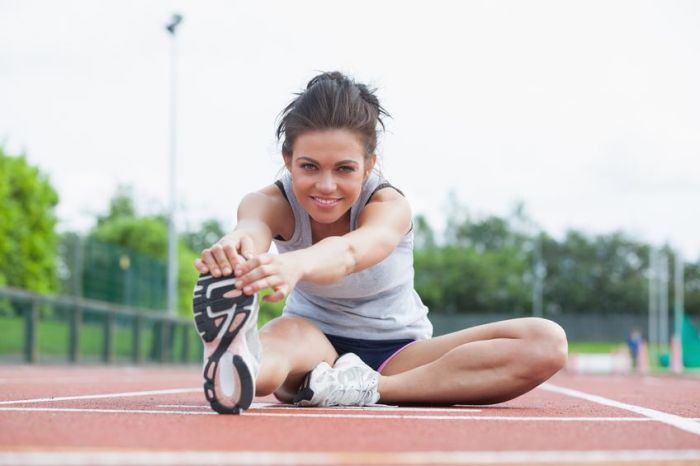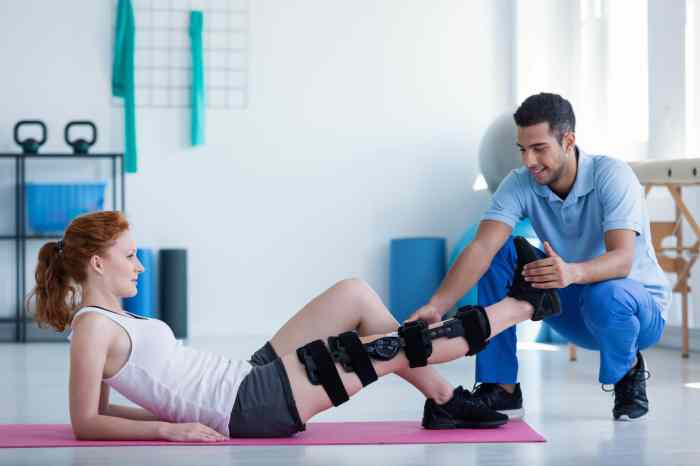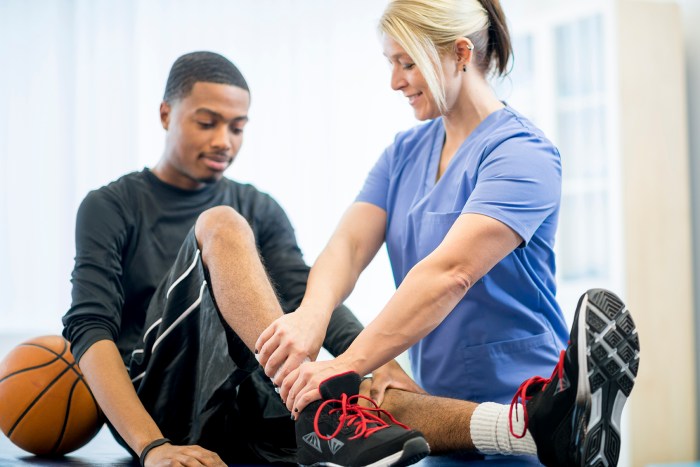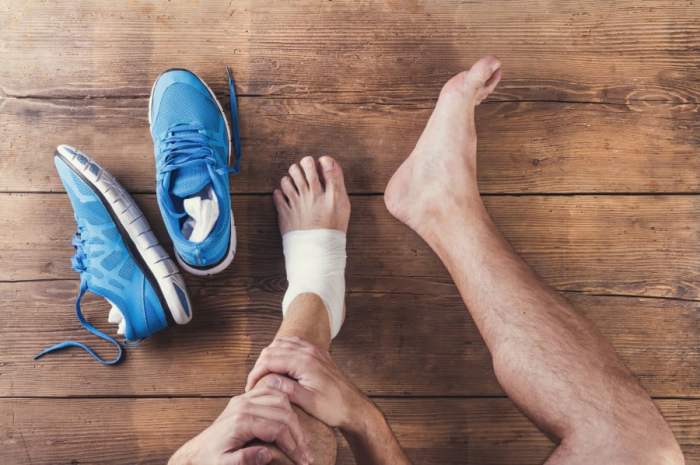Care and prevention of athletic injuries class – Embarking on a journey into the realm of athletic injuries, this comprehensive guide delves into the intricacies of injury prevention and care, equipping readers with the knowledge and strategies to safeguard their physical well-being and maximize their athletic potential.
From understanding the diverse types of injuries that can befall athletes to implementing proactive measures to prevent their occurrence, this guide provides a holistic approach to athletic injury management, empowering individuals to stay active and healthy throughout their athletic endeavors.
Types of Athletic Injuries

Athletic injuries are a common occurrence in sports and exercise. They can range from minor strains and sprains to more serious fractures and dislocations. Understanding the different types of athletic injuries is essential for proper prevention and treatment.
Athletic injuries can be classified into two main categories: acute and chronic.
Acute Injuries
- Sudden and severe onset
- Typically caused by a specific traumatic event, such as a fall or collision
- Common examples include sprains, strains, fractures, and dislocations
Chronic Injuries
- Develop gradually over time
- Often caused by repetitive stress or overuse
- Common examples include tendinitis, bursitis, and stress fractures
Prevention of Athletic Injuries
Preventing athletic injuries is essential for maintaining optimal health and performance. A comprehensive approach to injury prevention includes:
Proper Warm-Up and Cool-Down
Warming up before exercise prepares the body for activity by increasing blood flow, muscle flexibility, and range of motion. Cooling down after exercise helps the body recover by reducing muscle tension and heart rate.
Proper Training Techniques and Equipment
Using proper training techniques and equipment can significantly reduce the risk of injury. This includes:
- Training with qualified coaches
- Using appropriate equipment for the activity
- Gradually increasing the intensity and duration of training
Care for Athletic Injuries

Immediate first aid and medical attention are crucial for the proper care of athletic injuries. First aid includes:
- Rest
- Ice
- Compression
- Elevation
Medical attention may be necessary for more serious injuries. Treatment options may include:
- Immobilization
- Medication
- Physical therapy
- Surgery
Rehabilitation for Athletic Injuries

Rehabilitation is essential for optimal recovery from athletic injuries. It involves a structured program of exercises and therapies designed to restore function and prevent re-injury.
Phases of Rehabilitation, Care and prevention of athletic injuries class
- Pain Management
- Range of Motion Exercises
- Strengthening Exercises
The specific rehabilitation program will vary depending on the type and severity of the injury.
Role of Healthcare Professionals
Physical therapists, athletic trainers, and other healthcare professionals play a vital role in rehabilitation. They provide guidance, support, and expertise to help athletes recover from injuries and return to play safely.
Return to Play after Athletic Injuries: Care And Prevention Of Athletic Injuries Class

Returning to play after an athletic injury requires a gradual and safe approach. The following criteria should be met before an athlete is cleared to return to play:
- Absence of pain
- Full range of motion
- Adequate strength and stability
- Psychological readiness
A gradual return to play program helps prevent re-injury and ensures that the athlete is fully prepared to resume activity.
FAQ Compilation
What are the most common types of athletic injuries?
The most common types of athletic injuries include sprains, strains, fractures, dislocations, and contusions.
How can I prevent athletic injuries?
There are many ways to prevent athletic injuries, including warming up properly, cooling down properly, using proper technique, and wearing appropriate safety gear.
What should I do if I get injured while playing sports?
If you get injured while playing sports, it is important to seek medical attention as soon as possible. Early treatment can help to prevent further injury and speed up the healing process.